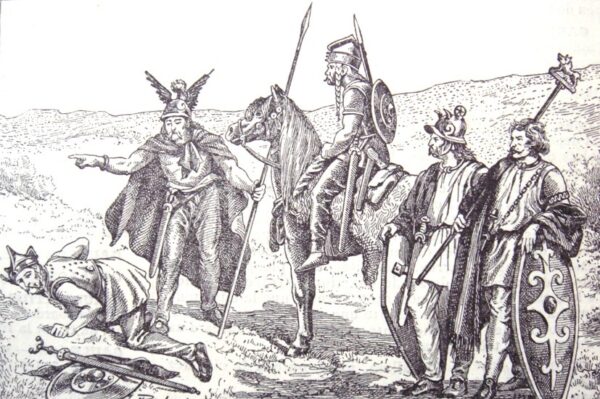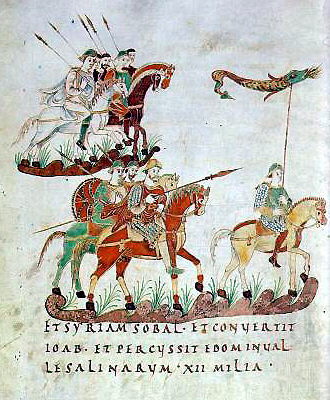


When the Goths sacked Rome in A.D. 410, it marked the end of the Western Roman Empire and the beginning of what became known as the Dark Ages. There are countless books on the subject, or rather subjects, but Raffaele D’Amato and Andrea Salimbeti have taken a different and more specific route on the subjects.
In their new work “Post-Roman Kingdoms: ‘Dark Ages’ Gaul & Britain, AD 450-800,” it is less about the kingdoms and leaders that arose throughout the Late Roman world and more about the armies that fought for those kingdoms and what they fought with, such as wardrobe and weaponry.
The new book published by Osprey Publishing is an intricately detailed work. The authors pull from numerous sources from the oral traditions of the Celtic and Germanic kingdoms that were eventually transcribed starting in the ninth century. Early in the book, there is a chronology of events starting with the year of the sack of Rome to the end of the eighth century. The events in the short chronology typically center around military conflicts and their outcomes.
Along with the chronological information, the book is full of images from archaeological digs that showcase the soldiers’ helmets, spears, swords, belts, and protective gear. Along with presenting the types of weaponry, the authors also discuss the types of weapons certain armies used and how they used them. The authors also go into detail about standards, which helped identify armies and/or kingdoms, such as the “rufus draco” (Red Dragon) of Britannia.
Illustrator Andrei Negin presents the soldiers in their various military outfits, which showcases what they would have looked like approximately 1,500 years ago. The authors also discuss which armies specialized in cavalry troops and/or infantry.
The book goes into detail, though it is by no means exhaustive, about warlords, generals, and kings, including the mythical Arthur, and how or why there was either conflict or alliances among them. Readers will discover how and why some kingdoms survived and some did not, the origins of many peoples, like the Scots and the Irish, as well as how the Church played a role in various kingdoms.
Despite these kingdoms arising after the fall of Rome and how they would have been considered “barbarians” by the Romans, the Roman world still played a significant role in their existence, like in their language, military tactics, artillery, and uniforms.
“Post-Roman Kingdoms” is a great primary source for understanding what armies looked like during these centuries and where they were located in what is now known as the United Kingdom and much of Western Europe. It is also a good secondary source that will help readers identify primary sources for further research. For such a short work, it is not short on sources from the ancient to the modern world.
For readers interested in the age of the post-Western Roman Empire, especially concerning military activity, this is a great find.
D’Amato, who has written several works on the Osprey Roman series, and Salimbeti, who has written for Osprey on subjects ranging from the ancient Greeks to the Normans of Italy, have presented a wealth of information in an easily digestible format (as is typically the case with an Osprey work).
‘Post-Roman Kingdoms: ‘Dark Ages’ Gaul & Britain, AD 450-800’
By Raffaele D’Amato and Andrea Salimbeti
Osprey Publishing, Jan. 17, 2023
Paperback: 64 pages


